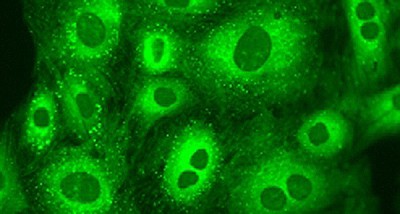As a result of our theoretical work on phosphine oxidation, we were able to predict that a -PH2 group grafted onto a fluorescent backbone should also exhibit enhanced stability to air oxidation. Accordingly, we carried out the synthesis of the bodipy-derived compound shown below, and prepared the first air-stable, highly fluorescent primary phosphine (Angew. Chem. Int. Ed. 2012, 51, 4921).

As we have shown with the chiral derivatives, the primary phosphine can still be readily functionalised; thus reaction with vinyldiphenylphosphine under catalytic conditions yields the novel tripodal phosphine shown below . This compound again retains impressive photophysical properties, and chelates transition metals such as rhodium and rhenium which, surprisingly, has very little impact on the quantum yield of the resulting complexes.

One application for these tripodal phosphines would be their use as scaffolds to kinetically stabilise medically useful radioisotopes, such as 99mTc, which is used clinically as a SPECT imaging agent. Fluorescent tripodal complexes based on nitrogen as the donor atom have been demonstrated (below left, Zubietta et al, JACS, 2004, 126, 8598), but we believe we are the first to develop phosphorus-based systems. The versatility phosphorus offers in terms of starting materials (both hydrides and halides are accessible), oxidation state and late transition metal affinity, coupled with its attractive NMR properties make such systems attractive alternatives to the nitrogen analogues.

Currently, with our collaborators, we are preparing radiolabelled analogues and investigating their cellular biochemistry; in this way we hope to be able to monitor how these imaging agents are behaving both in vivo by virtue of SPECT and in vitro using fluorescence, in order to better understand how these and related agents function at a cellular level.
Laura Davies won Silver Prize for Chemistry in the National 2012 Science, Engineering and Technology Exhibition at the Houses of Parliament for her work on this project: read more about that here

